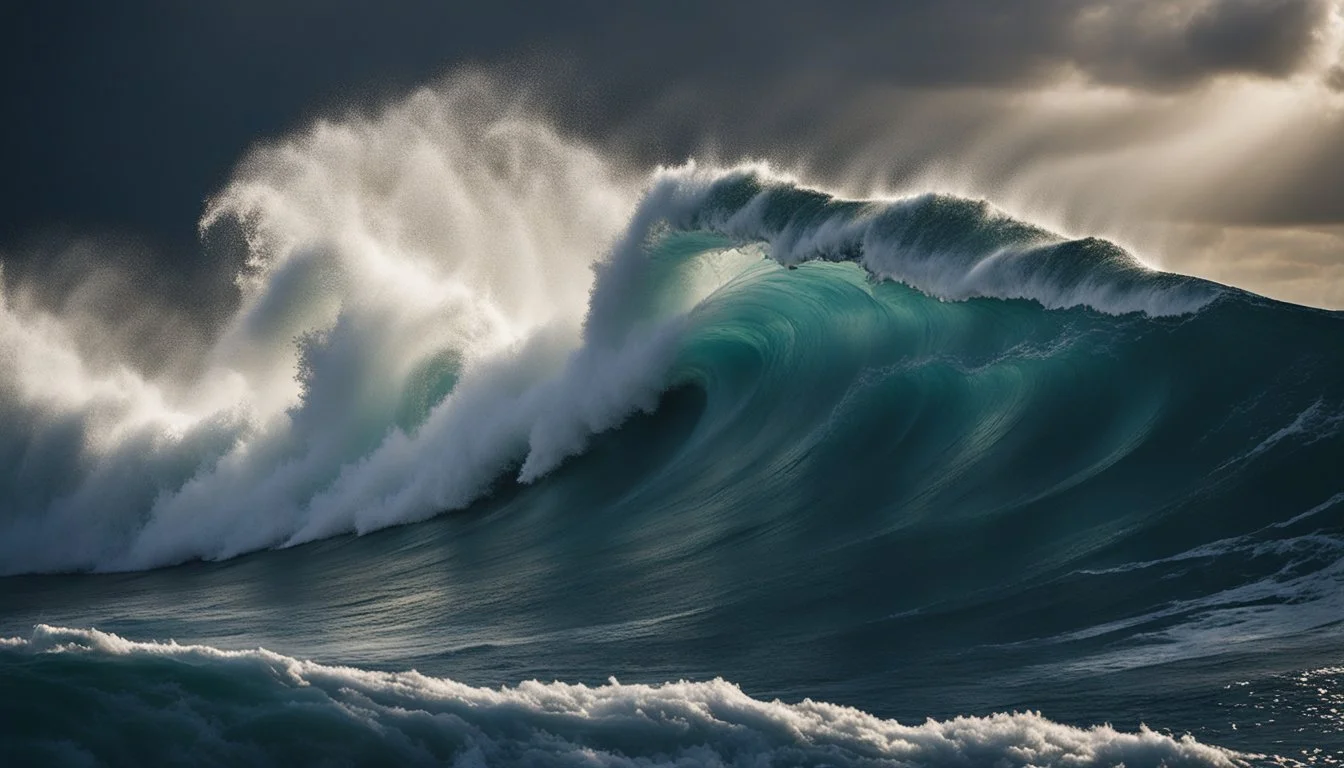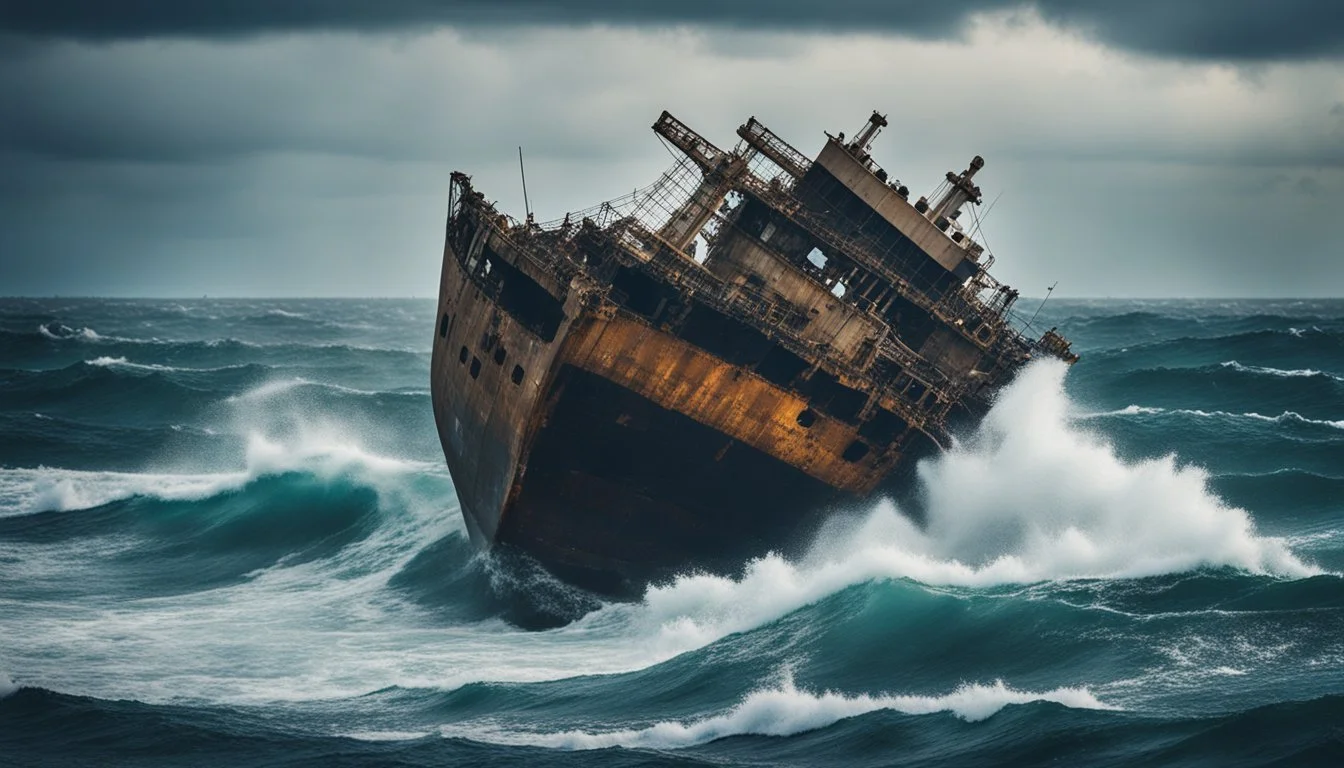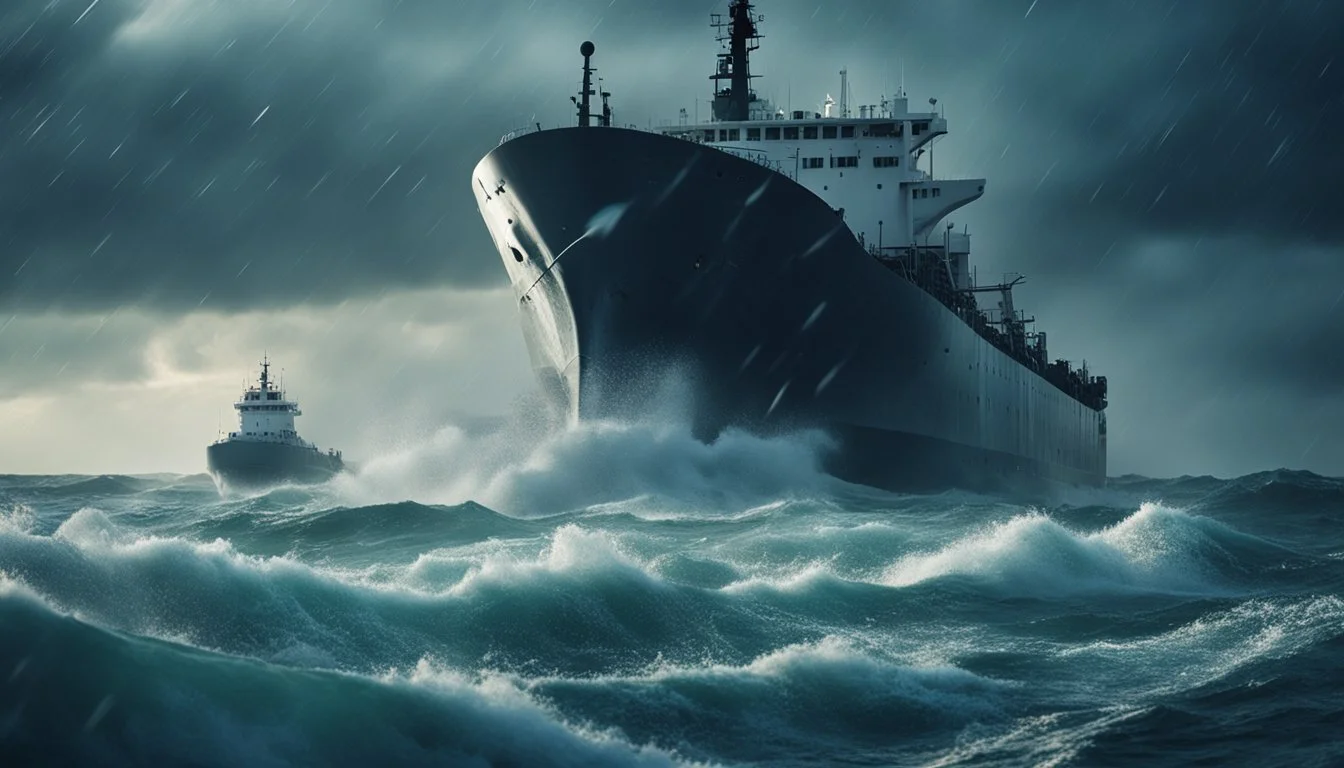Leviathan Documentary Challenges Norms with Controversial Filming Techniques
The 2012 documentary "Leviathan" pushed aesthetic boundaries in cinema through its unconventional filming techniques. Directors Lucien Castaing-Taylor and Véréna Paravel employed small waterproof cameras attached to fishermen and equipment on a commercial fishing vessel, capturing raw and disorienting footage of life at sea.
The film's controversial approach challenged traditional documentary aesthetics by immersing viewers in a visceral, often chaotic visual experience. This experimental style blurred the lines between objective observation and subjective participation, provoking discussions about the nature of documentary filmmaking and the relationship between filmmaker, subject, and audience.
"Leviathan" exemplified how avant-garde techniques can reshape cinematic storytelling. By eschewing narration and conventional framing, the film created a sensory journey that forced viewers to engage with the harsh realities of commercial fishing in new ways. Its bold aesthetic choices continue to influence experimental filmmakers seeking to push the boundaries of visual storytelling.
Exploring the Boundaries of Traditional Cinematography
'Leviathan' challenges conventional filmmaking through its unconventional approach to cinematography. The film employs groundbreaking techniques that redefine how audiences experience cinema visually.
Innovative Camera Techniques
'Leviathan' utilizes unique camera placements to immerse viewers in the harsh fishing vessel environment. Cameras are attached to fishing poles, nets, and even sailors' helmets. This creates a visceral, first-person perspective rarely seen in traditional filmmaking.
The film also employs waterproof GoPro cameras. These are submerged to capture underwater scenes from angles impossible with standard equipment. The resulting footage brings an unprecedented intimacy to aquatic shots.
Extreme close-ups are another hallmark of the film's innovative approach. These tight frames emphasize textures and details often overlooked in conventional cinematography.
Camera Movements and Framing
'Leviathan' abandons stable, predictable camera movements in favor of a more chaotic style. The camera lurches and swings with the motion of the ship, mirroring the instability of life at sea.
Unconventional framing choices further distinguish the film. Objects and people are frequently cut off at the edges of the frame. This technique creates a sense of claustrophobia and disorientation.
The filmmakers also employ extreme low and high angle shots. These perspectives challenge viewers' spatial awareness and provide unique vantage points of the ship's operations.
The Role of Lighting and Color
Natural lighting plays a crucial role in 'Leviathan's' visual aesthetic. The filmmakers rely heavily on available light sources, such as the dim glow of work lamps or the harsh glare of floodlights.
This approach results in high-contrast images with deep shadows and bright highlights. It creates a raw, unfiltered look that enhances the film's documentary-like feel.
Color grading in 'Leviathan' is minimal. The film preserves the natural, muted palette of the ocean environment. This decision emphasizes authenticity and grounds the visual experience in reality.
Leviathan's Aesthetic Impact
Leviathan's distinctive visual approach and narrative structure profoundly shape its aesthetic impact. The film employs innovative techniques to create a powerful, immersive experience that challenges audience perceptions and evokes strong emotional responses.
Visual Storytelling and Narrative Structure
Leviathan's visual storytelling employs long, contemplative shots that capture the stark beauty of its coastal setting. The film's pacing is deliberate, allowing viewers to absorb the nuances of each scene. Zvyagintsev uses minimal dialogue, relying instead on powerful imagery to convey meaning.
The narrative unfolds in a non-linear fashion, forcing viewers to piece together the story. This approach enhances the film's sense of unease and uncertainty. Zvyagintsev's framing often places characters at the edges of the screen, emphasizing their powerlessness against larger forces.
The director's use of natural light and muted color palette reinforces the bleak atmosphere. These visual choices reflect the harsh realities faced by the characters and their environment.
Realism and Immersive Experience
Leviathan achieves a heightened sense of realism through its meticulous attention to detail. The film's setting feels lived-in and authentic, from the weathered buildings to the characters' worn clothing. This authenticity grounds the story in a tangible reality.
The immersive sound design captures the constant presence of the sea and the harsh wind, enveloping viewers in the film's world. These auditory elements contribute to the oppressive atmosphere and underscore the characters' struggles.
Zvyagintsev's camera often adopts unconventional angles, placing viewers in uncomfortable positions. This technique creates a sense of unease and forces audiences to engage with the story from new perspectives.
Audience Perception and Emotional Engagement
Leviathan's aesthetic choices challenge viewers' expectations and comfort levels. The film's unflinching portrayal of corruption and despair can be emotionally draining, yet compelling. Its slow pace and ambiguous narrative demand active engagement from the audience.
The film's striking visuals and haunting atmosphere linger in viewers' minds long after watching. This lasting impact prompts reflection on the themes of power, injustice, and human resilience.
Zvyagintsev's refusal to provide easy answers or moral clarity forces audiences to grapple with complex ethical questions. This approach can be frustrating for some viewers but ultimately leads to a more profound and thought-provoking experience.
Crafting Raw Emotion through Sound and Special Effects
'Leviathan' breaks new ground in its use of sound design and visual effects to evoke raw, visceral emotions. These technical elements work in tandem to create an immersive and unflinching portrayal of reality.
Innovations in Sound Design
The film employs a layered soundscape that captures the harsh environment of the Russian coast. Crashing waves, howling winds, and the creaking of metal create a constant auditory backdrop. This sonic palette enhances the sense of isolation and struggle faced by the characters.
Dialogue is often muffled or obscured, forcing viewers to lean in and engage more deeply with the narrative. The absence of a traditional musical score amplifies the impact of natural sounds. Sudden bursts of noise punctuate key moments, jolting the audience and mirroring the characters' emotional states.
Integrating Special Effects and Realism
'Leviathan' blends subtle special effects with raw, naturalistic cinematography to create a hyper-realistic world. CGI is used sparingly, primarily to enhance existing landscapes and weather conditions. This approach maintains the film's documentary-like feel while allowing for heightened visual impact.
Practical effects, such as the deteriorating buildings and rusting machinery, ground the film in tangible reality. The decaying whale skeleton serves as a powerful visual metaphor, achieved through a combination of practical and digital techniques. These elements work together to create a visceral sense of place and reinforce the film's themes of decay and struggle.
Themes and Philosophies in 'Leviathan'
'Leviathan' explores profound themes of human nature, power, and societal structures. The film delves into existential questions through its characters and narrative.
Loss, Fear, and the Human Condition
The characters in 'Leviathan' grapple with intense feelings of loss and fear. Kolya, the protagonist, faces the potential loss of his home and livelihood. This threat looms over him, creating a palpable sense of anxiety throughout the film.
The fear of powerlessness permeates the narrative. Characters struggle against corrupt officials and an oppressive system. Their fears reflect deeper concerns about human existence in the face of overwhelming forces.
Loss is portrayed as an inevitable part of life. The film shows how characters cope with personal losses and the loss of hope. These themes resonate with universal human experiences of grief and vulnerability.
Dissecting the Underlying Themes
'Leviathan' scrutinizes the nature of power and its effects on individuals and communities. The film portrays a stark reality where those in authority abuse their positions for personal gain.
The concept of justice is examined critically. Characters seek fairness but find a system rigged against them. This exploration raises questions about the possibility of true justice in a corrupt world.
Religion and its role in society form another key theme. The film presents contrasting views on faith, from genuine belief to cynical manipulation. This adds depth to the philosophical discourse on morality and social order.
'Leviathan' also touches on the theme of resilience. Despite facing seemingly insurmountable odds, characters display moments of strength and defiance. This highlights the complexity of human nature in challenging circumstances.
The Evolution of Horror in Cinematic Forms
Horror cinema has undergone significant transformations, embracing new techniques and storytelling approaches. Filmmakers have pushed aesthetic boundaries to elicit fear and unease in audiences through innovative visual and narrative methods.
Leviathan's Contribution to Horror
"Leviathan" introduced unconventional filming techniques that revolutionized the horror genre. The film's use of distorted camera angles and disorienting underwater sequences created a sense of claustrophobia and impending doom.
Its experimental approach to sound design amplified the tension, utilizing eerie silence and sudden bursts of noise to keep viewers on edge. The film's practical effects and creature designs set new standards for realistic and terrifying monsters in aquatic horror.
"Leviathan" demonstrated that horror could be elevated through artistic vision and technical innovation, inspiring future filmmakers to explore new ways of crafting frightening experiences on screen.
Experimental and Traditional Forms
Horror cinema has evolved by blending experimental and traditional forms. Avant-garde techniques like non-linear narratives and abstract imagery have been incorporated into mainstream horror, creating unsettling experiences that challenge viewer expectations.
Found footage films emerged as a subgenre, using shaky cam aesthetics and documentary-style filming to enhance realism and immersion. This approach blurred the lines between fiction and reality, intensifying the horror experience.
Traditional horror elements like jump scares and atmospheric tension have been refined and combined with psychological themes, resulting in more nuanced and thought-provoking films. The genre now often explores societal fears and personal traumas, adding depth to its scares.
The Creative Process of Gaspar Noé
Gaspar Noé's unique filmmaking approach blends provocative visuals with boundary-pushing techniques. His creative process stems from a desire to challenge viewers and explore the human psyche through cinema.
Auteurship and Artistic Expression
Noé's films bear his distinct artistic signature. He often employs long, unbroken takes and disorienting camera movements to immerse audiences. His work on "Enter the Void" showcases this style, utilizing first-person perspective and psychedelic imagery.
Noé writes and directs his films, maintaining creative control throughout production. He's known for improvisation on set, allowing scenes to develop organically. This approach gives his actors freedom to explore their characters.
The filmmaker embraces controversy, tackling taboo subjects head-on. His movies frequently feature graphic violence and explicit sexuality. These elements serve his artistic vision rather than mere shock value.
Blurring the Lines Between Art and Cinema
Noé's films challenge traditional cinematic conventions. He experiments with narrative structure, as seen in "Irreversible" which unfolds in reverse chronological order. This technique forces viewers to reconsider cause and effect.
Visual artistry is central to Noé's creative process. He uses vibrant colors and striking compositions to create memorable imagery. His film "Climax" exemplifies this, with its neon-drenched dance sequences and nightmarish descent into chaos.
Sound design plays a crucial role in Noé's work. He carefully selects music and manipulates audio to enhance the viewing experience. In "Lux Æterna," he uses strobe effects and dissonant sounds to disorient the audience.
Controversies and Legal Challenges
The filming techniques used in 'Leviathan' sparked heated debates and legal issues. These controversies centered on the production's methods and their impact on both the entertainment industry and public perception.
Navigating Legal Implications
'Leviathan' faced several legal hurdles during and after production. The filmmakers' unconventional approach to capturing footage raised questions about consent and privacy laws.
Some scenes were shot without explicit permission from bystanders, leading to potential violations of individual rights. This resulted in lawsuits from people who appeared in the film unknowingly.
The production team also encountered issues with local authorities over filming permits. Several key scenes were captured in restricted areas, prompting investigations into the crew's activities.
Public Reception and Criticism
'Leviathan' polarized audiences and critics alike. Many praised its innovative techniques for pushing cinematic boundaries, while others condemned the film as exploitative.
Some viewers felt the raw, unfiltered nature of the footage was too intense and bordered on voyeurism. Critics argued that the film crossed ethical lines in its pursuit of realism.
The film's portrayal of certain communities sparked outrage among social activists. They claimed 'Leviathan' perpetuated harmful stereotypes and invaded privacy.
Despite the controversy, 'Leviathan' gained a cult following. Supporters lauded its unflinching look at rarely-seen aspects of society and its technical achievements in filmmaking.
Conclusion
'Leviathan' exemplifies how pushing aesthetic boundaries can yield powerful cinematic experiences. Its unconventional filming techniques challenge audiences and expand the language of cinema.
The film's controversial approach sparks important discussions about artistic freedom and the role of discomfort in art. It forces viewers to confront difficult realities through its unflinching gaze.
While some may find 'Leviathan' disturbing, its impact on film as an art form is undeniable. It joins a lineage of boundary-pushing feature films that have expanded cinematic possibilities.
'Leviathan' demonstrates that experimental techniques can enhance storytelling when used purposefully. Its methods may influence future filmmakers to explore new visual and narrative territories.
The film's legacy continues to reverberate through arthouse cinema. It stands as a testament to the enduring power of artists who dare to challenge conventions and forge new paths in their craft.








